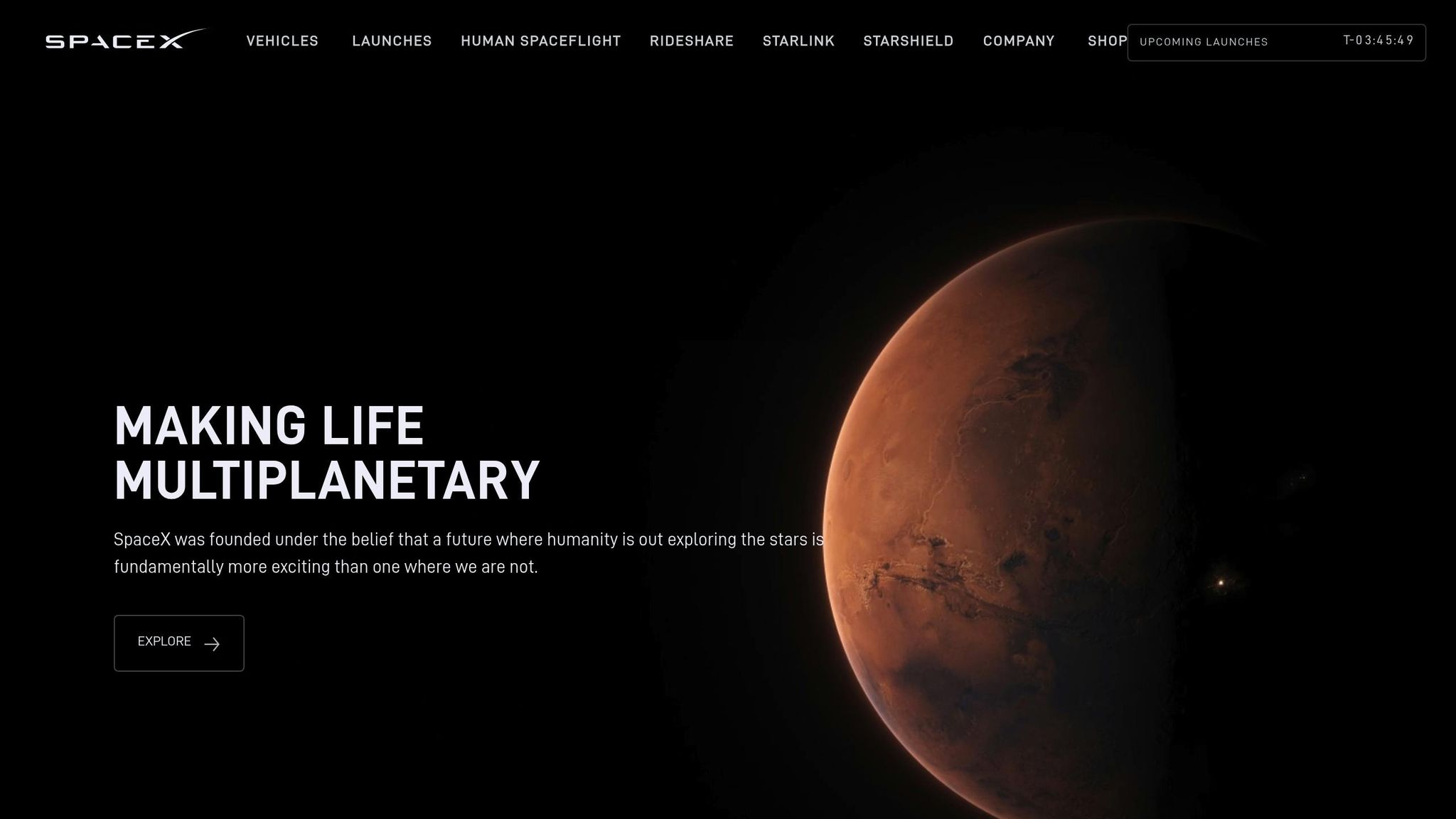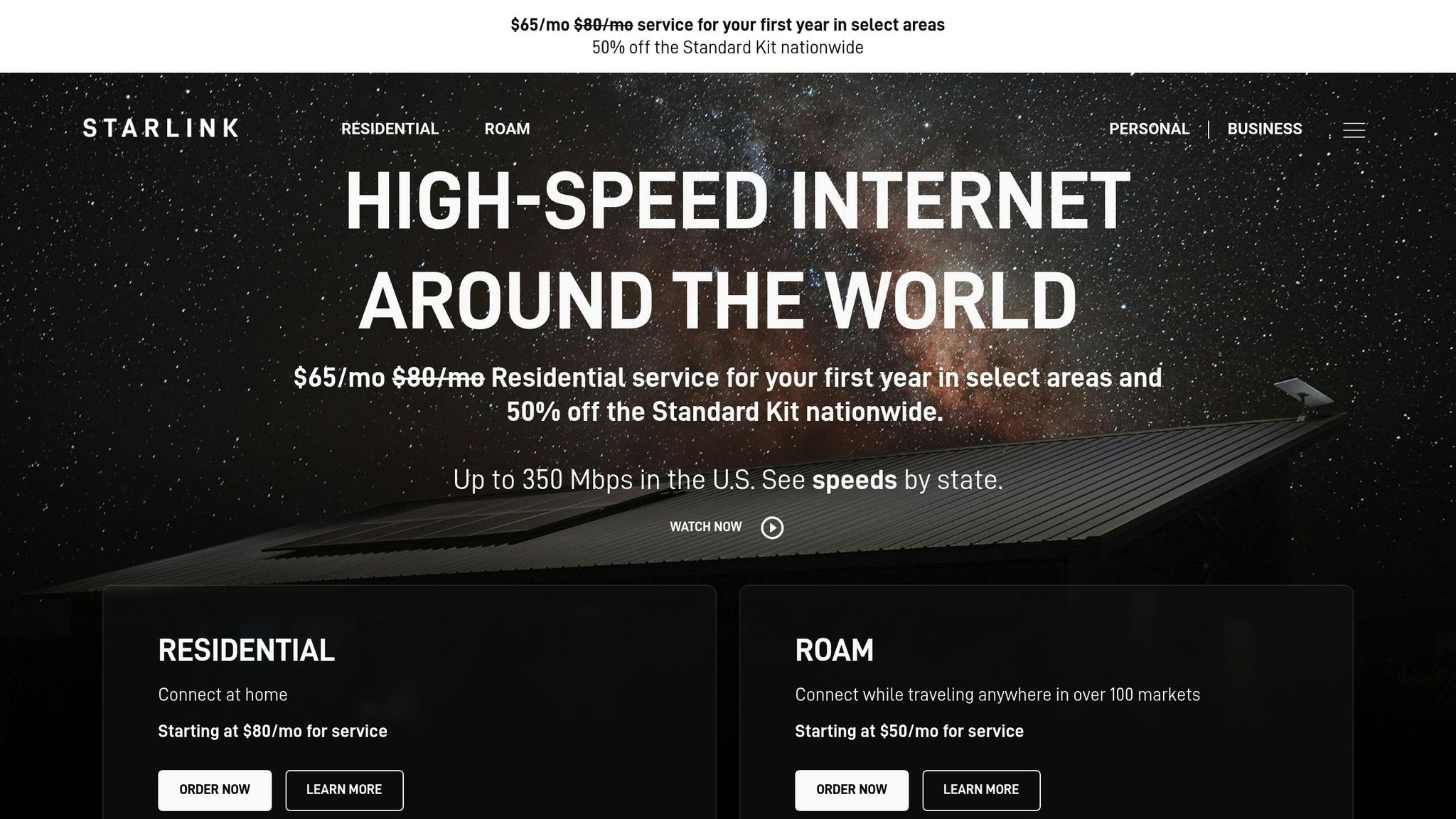How SpaceX and Starlink Became Investment Drivers
Discover how SpaceX and Starlink revolutionized the space industry, driving investments and transforming U.S. space dominance.

The world of space exploration and satellite technology has undergone a seismic shift over the past two decades, and at the center of this transformation stands SpaceX. Founded by Elon Musk in 2002, the company has not only reshaped how humanity approaches space travel but has also created a new paradigm in private-sector innovation and investment. For aspiring and current investors eyeing pre-IPO opportunities, understanding the story of SpaceX and its satellite arm, Starlink, is critical to grasping the potential of this sector.
This article breaks down the meteoric rise of SpaceX, its game-changing technologies, and its dual role as a national asset and commercial leader. Beyond the numbers, it explores how SpaceX's dominance influences the defense, internet connectivity, and investment landscapes - and what this means for retail investors seeking to seize opportunities in cutting-edge industries.
The Origins of SpaceX: Disrupting a Monopoly

SpaceX’s story begins with Elon Musk’s vision of reducing the cost of space travel to make humanity a multiplanetary species. Using funds generated from the sale of PayPal, Musk sought to challenge the aerospace monopoly held by United Launch Alliance (ULA), a joint venture between Boeing and Lockheed Martin. At the time, the U.S. government paid exorbitant sums for satellite launches, with limited options available.
The company’s first breakthrough came in 2008, when NASA awarded SpaceX a $1.6 billion contract to design and operate rockets capable of ferrying cargo to the International Space Station (ISS). This deal, coupled with early funding from the Department of Defense (DoD), saved SpaceX from financial collapse and cemented its role as a reliable partner in the U.S. space program.
SpaceX's Technological Edge: Why It Dominates the Market
SpaceX’s success lies in its ability to innovate quickly, reduce costs, and scale operations. Three critical factors underpin its market dominance:
1. Reusability
SpaceX revolutionized the aerospace industry by designing reusable rockets. The Falcon 9, for instance, can be launched, recovered, and relaunched multiple times, drastically lowering the cost of space access compared to single-use rockets. This innovation allowed SpaceX to undercut traditional aerospace providers while maintaining profitability.
2. Vertical Integration
By producing most of its components in-house, SpaceX controls costs and accelerates development timelines. This approach ensures that SpaceX can rapidly innovate without being slowed by external supply chains.
3. Achieving Scale
Perhaps the most impressive aspect of SpaceX’s strategy is its ability to scale operations. For example, the Starlink satellite business mass-produces millions of flat panel antennas - a feat previously unimaginable in the satellite industry. This capacity not only supports current demand but positions SpaceX to dominate future markets.
Starlink: A New Frontier in Connectivity

Starlink, SpaceX’s satellite internet constellation, has become an indispensable resource for providing high-speed internet to remote and underserved areas. By 2024, Starlink satellites accounted for 65% of all operational satellites in orbit, and the service has been critical in both civilian and military applications.
In conflict zones such as Ukraine, Starlink provided secure communication channels when traditional infrastructure failed. However, Musk’s refusal to extend Starlink services for a Ukrainian military operation - citing fears of escalating to a global conflict - highlighted the risks of over-reliance on a single private entity for critical infrastructure.
SpaceX's Role in National Defense
While SpaceX initially focused on commercial and scientific endeavors, its growing involvement in defense has become a focal point. Contracts with the DoD have skyrocketed, with projected revenues of $3 billion from defense-related services in 2025. These deals include the $1.8 billion Starshield program, which builds secure, government-controlled spy satellites.
SpaceX’s increasing role in national security raises questions about monopolistic dominance. While the company’s innovations benefit the U.S., dependence on a single private entity for strategic defense capabilities highlights the need for diversification within the industry.
Risks and Challenges: SpaceX as a Monopoly?
Despite its achievements, SpaceX’s dominance comes with potential risks. Experts liken SpaceX’s position to Ford Motor Company in 1913 when it revolutionized car manufacturing with assembly lines. While such leadership drives innovation, it risks stifling competition if unchecked.
The U.S. government has begun addressing this by awarding contracts to competitors like Blue Origin, Rocket Lab, and United Launch Alliance. However, the space industry’s high barriers to entry and SpaceX’s technological lead mean that it will likely remain the dominant player for at least 15-20 years.
What This Means for Investors
For retail investors interested in pre-IPO opportunities, SpaceX and Starlink represent a rare opportunity to gain exposure to a fast-growing, transformative industry. However, investing in private companies comes with unique challenges, including limited transparency and liquidity. Here’s why SpaceX remains an alluring yet complex opportunity:
- Market Leadership: SpaceX’s dominance in launches, satellites, and emerging defense contracts ensures it will continue to generate robust revenue streams.
- Innovation Pipeline: With projects like the fully reusable Starship rocket, SpaceX is poised to further reduce launch costs and explore new markets.
- Ecosystem Growth: Lower costs and enhanced access to space create opportunities for downstream industries, making SpaceX a catalyst for broader economic growth.
- Risks of Dependency: Over-reliance on SpaceX by the government and private sector raises concerns about long-term stability and governance.
Key Takeaways
- SpaceX’s Market Dominance: SpaceX accounted for an astounding 83% of all orbital launches in 2024, far outpacing its competitors.
- Innovation-Driven Success: Reusability, vertical integration, and scaling have enabled SpaceX to drastically reduce space access costs.
- Starlink’s Impact: Starlink provides critical internet access to remote and wartime regions, but its reliance on a single individual’s decisions raises ethical and strategic concerns.
- Defense Sector Growth: SpaceX’s defense contracts are projected to generate $3 billion in 2025, highlighting its growing role in national security.
- Monopoly Risks: SpaceX’s dominance may hinder competition, prompting the government to invest in alternative providers.
- Investment Potential: While currently private, SpaceX offers investors exposure to transformative technologies and emerging markets, albeit with limited transparency.
Conclusion
SpaceX’s journey from a scrappy startup to the world’s leading aerospace company is a case study in innovation, risk-taking, and disruption. For investors, the company embodies the potential of private enterprise to not only transform industries but also redefine what is possible. The opportunities that SpaceX and Starlink present are tantalizing, but they come with inherent risks tied to monopolistic dominance and governance.
As space exploration becomes increasingly commercialized, understanding SpaceX’s role and the broader ecosystem it influences will be critical for investors looking to diversify their portfolios in forward-thinking, high-growth sectors. Whether or not SpaceX goes public, its impact on the investment landscape - and the world - will be felt for decades to come.
Source: "How The U.S. Became So Dependent On SpaceX" - CNBC, YouTube, Aug 24, 2025 - https://www.youtube.com/watch?v=wE2Zcq0CP48
Use: Embedded for reference. Brief quotes used for commentary/review.
Comments ()